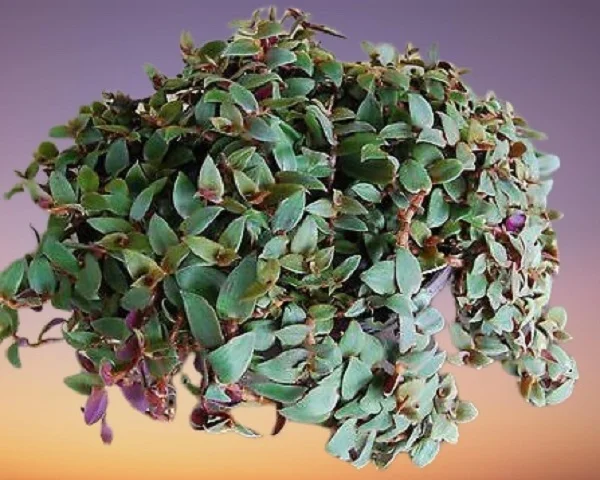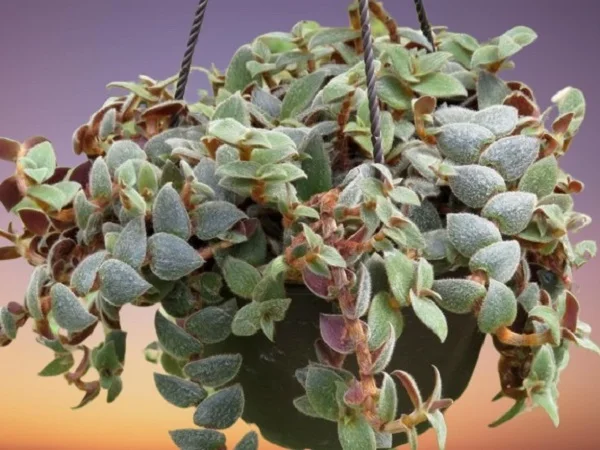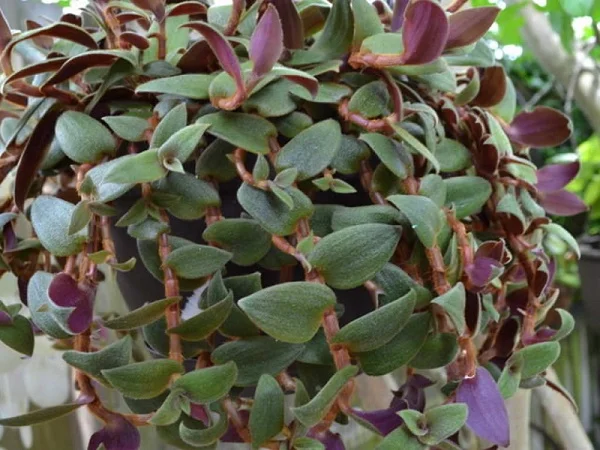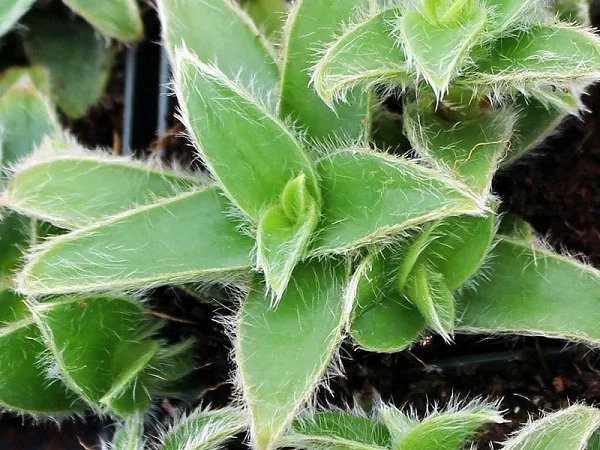9 Reasons Why Teddy Bear Vine is Turning Brown and How to Fix Them
Some links in this post may be affiliate links
Teddy Bear Vine is turning brown due to root-rot, inconsistent watering, pests infestations, temperature stress, too little light, nutrients deficiency, salts buildup among others.
Teddy Bear Vine (Cyanotis kewensis) is an easy-care plant which blossoms in bright indirect light with some morning sunshine, warmth of 15-270C, humidity of 50-55% and moderately moist, rich, well-drained succulents soil coupled with monthly feeding in the growing season. Learn how to grow and care for Teddy Bear Vine.
Browning on Teddy Bear Plant is an indication that the growing conditions are not right. Below we have discussed 9 causes of browning on Teddy Bear Vine. Keep reading for more on these causes and how to fix them.

9 Reasons why Teddy Bear Plant may Turn Brown and their Remedies
1. Root-rot Disease
Soggy soil reduces the oxygen concentration in the rootzone and this causes the roots to die due to root-rot disease. When roots die, they cannot take up water to the leaves, they wilt due to dehydration, begin to brown and die.
How to fix it
- Carefully slip the Teddy Bear Vine out of its pot and inspect the roots; brown-black mushy roots indicate root-rot, trim them off.
- Treat the healthy roots with a fungicidal solution as recommended by the manufacturer.
- Disinfect the pot with the fungicidal solution or use a fresh pot to repot the plant in fresh free-draining soil.
- Do not water the plant and keep it dry for some time before resuming watering.
- Use a pot that has a drainage hole and well-draining soil to prevent waterlogging.
- Always allow the top 1-2 inches of soil to dry out between waterings.
- Reduce watering in fall and winter to maintain the soil slightly moist because growth minimal at this time.
- If the plant is badly damaged, use the healthy stems to propagate new plants. Learn how to propagate Teddy Bear Vine.
2. Inconsistent Watering
Both underwatering and overwatering are disastrous to the growth of the plant. Overwatering will lead to rotting, yellowing followed by browning resulting in plant death. Underwatering on the other hand will cause wilting, yellowing, browning and evetual loss of the plant.
How to fix it
Water the plant when the top 2-3 inches of soil dry out but do not let the soil dry out completely. Do not water on a schedule.
Use a well-draining soil and a pot that has a drainage hole to avoid waterlogging.
3. Pest Infestations
Teddy Bear Vine is prone to aphids and spider mites which are more prevalent in dry, stuffy conditions. These pests attack the new growth from where they suck the plant sap. This causes the plant to become dehydrated and results in the leaves wilting and browning.
How to fix it
- Isolate the affected plant to prevent spread to the other plants.
- Treat the affected plant with neem oil or insecticidal soap as per the manufacturers' instructions.
- Regularly inspect your plant for these pests and take timely control measures.
- Keep the plant well-pruned to discourage the pests.
- Maintain a good air flow to depress the pests infestations.

4. Poor Quality Soil
Poor quality soil does not drain easily and therefore it easily becomes compacted or soggy which will negatively impact the growth of the plant resulting in yellowing, browning and dropping leaves.
How to fix it
Pot your Teddy Bear Plant in good quality soil that is loose, free-draining and rich in organic matter. It should be loose enough to allow water to drain out fast enough to avoid waterlogging. Cactus and succulents potting mixes are ideal for this vine.
5. Temperature Stress
Extreme temperatures due to exposure of the plant to drafts will cause stunted growth resulting in wilting, yellowing, browning, leaf loss and eventual death of the plant.
How to fix it
Keep your Teddy Bear Vine away from sources of drafts like hot surfaces, hot air vents, AC units, windy doors, drafty windows and others to prevent temperature flacuations.
Maintain a temperature of 15-270C; usually, a room temperature that is comfortable for you is ideal for this plant.
6. Too Little Light
Enough light is needed for making food that is required for energy and growth. If the light is insufficient the plant cannot make enough food for energy and growth. In an attempt to save energy, it begins to die from the leaves. They turn yellow, brown and eventually drop off.
How to fix it
Position your Teddy Bear Plant in a brighter spot where it will receive bright light with 4-6 hours of morning sunshine or instal a grow light if the natural light is not adequate.
Regularly turn the pot to ensure that the plant absorbs enough light for photosynthesis on all sides.

7. Nutrients Deficiency
Shortage of nutrients in the actively growing tips causes nutrients to be withdrawn from the older lower leaves which turn yellow, brown and drop off.
How to fix it
Feed your Teddy Bear Vine with a balanced, water-soluble fertilizer every 4 weeks in spring and summer. Make sure to follow the instructions on the label.
8. Salts Buildup
Excess salts in the soil will cause the roots to die due to fertilizer burn. When the roots die, they cannot take up water to the leaves. Without adequate water, the leaves get dehydrated, they wilt, begin to turn brown, then yellow and fall off.
How to fix it
Regularly flush out the salts by running a stream of water through the soil until it comes out through the drainage holes and repeat the process several times.
Do not feed in fall and winter as growth is minimal at this time and feeding at this time can lead to fertilizer burn.
9. Being Pot-bound
If a plant is pot-bound, the roots have filled the pot and there is very little soil to hold water when you water the plant. Therefore, there is no water for the plant to take up to the leaves. The leaves loss their stiffness, they wilt, turn brown, yellow and drop.
How to fix it
Check the bottom of the pot for roots growing through the drainage hole and repot the Teddy Bear Vine into a pot one size larger than the current one. Check out these terracotta pots with saucer on Amazon.
You liked it? Share on social media.
Related Content
Amazon Associates Disclosure
Homeplantsguide.com is a participant in the Amazon Services LLC Associates Program, an affiliate advertising program designed to provide a means for sites to earn advertising fees by advertising and linking to amazon.com.




